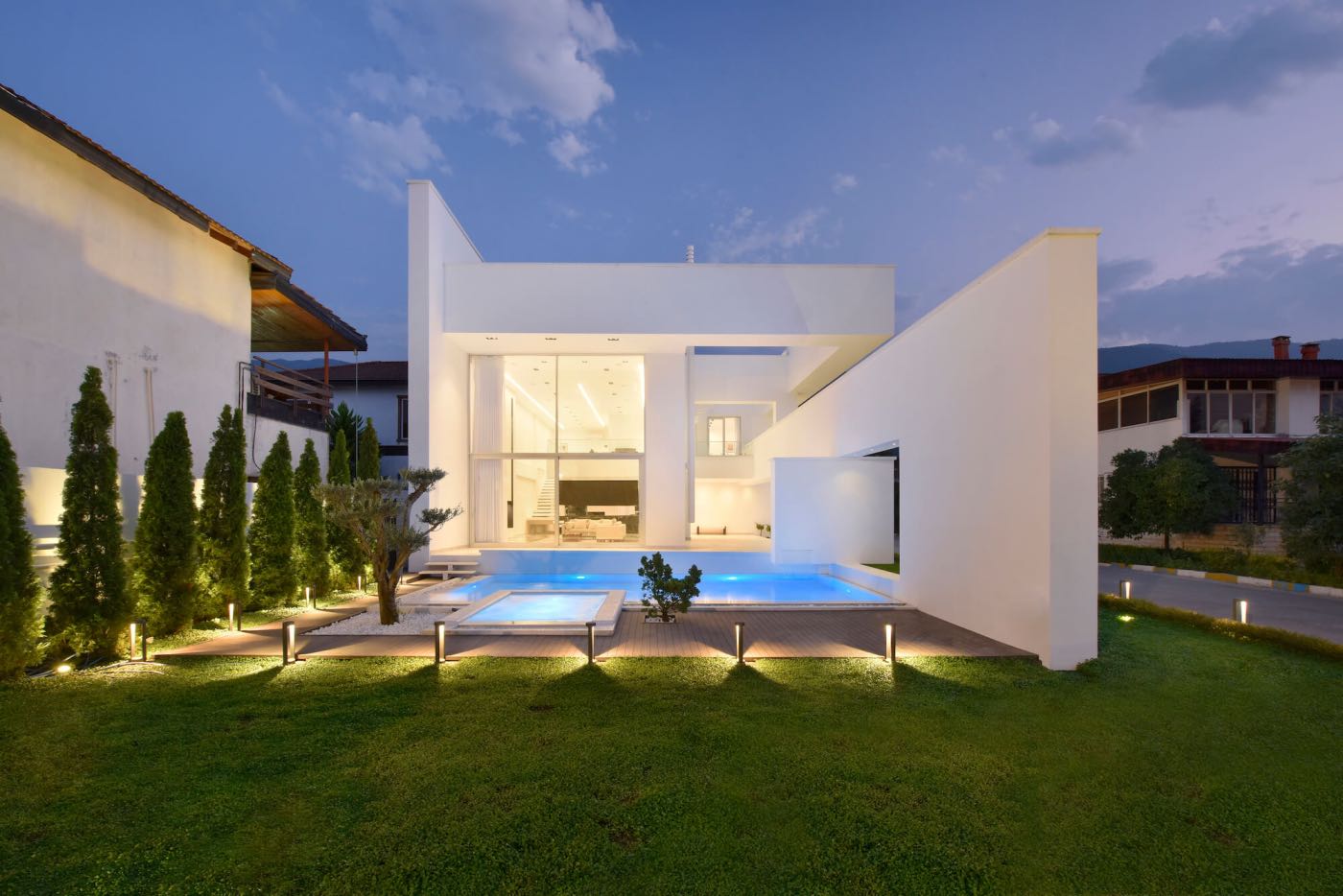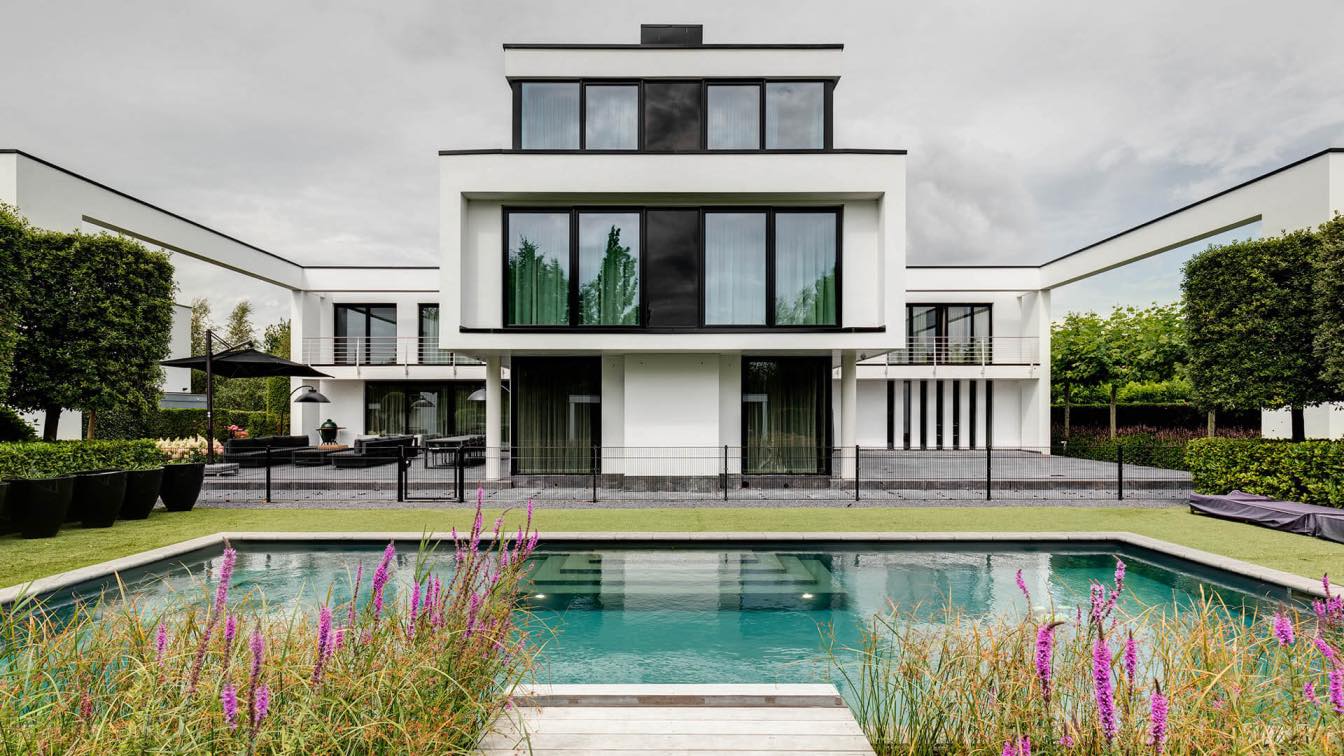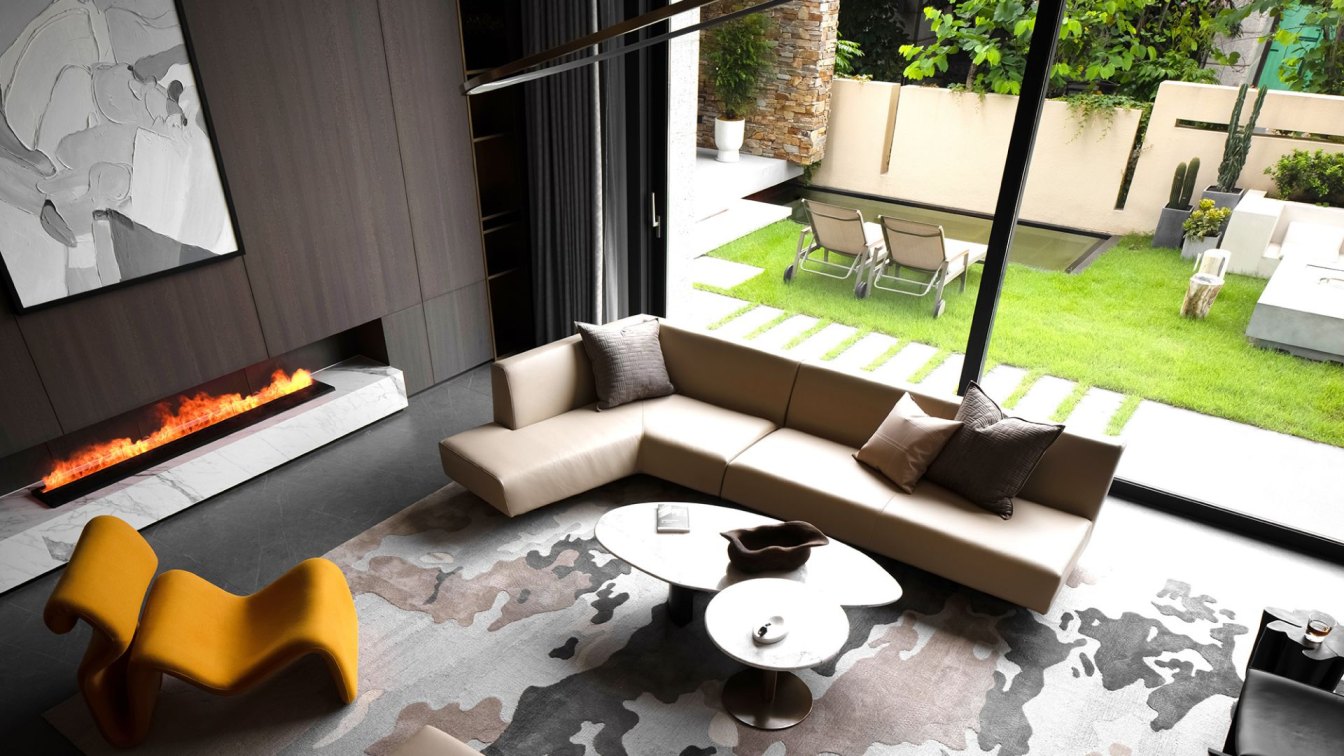35-51 Architecture Office: Dasht-e-chehel villa is an experience to reach an external-internal life in a cold climate. It is about how to stay out of the building and experience snow and rain but still remain in a safe zone. And how to be inside without losing sensory, visual and psychological connection with the outside. And also, how to blur the boundary line between inside and outside to reach a greater freedom.
At the beginning of the design, due to the extension of the ground in the north-south direction (with length of 50 and width of 20 meters), we decided to place the building in the same direction of ground and closer to the north border, in order to benefit the beautiful view of the north.
Then, by making a diagonal cut along the building, we brought the north view to the heart of the building, and in addition, an outdoor roof was created toward the yard that would allow the physical presence of humans during snow, rain and also let them use the midday heat (while being protected from direct sunlight). By the way, residents are not limited to the inside of the building, and they can use a larger part of the yard in cold seasons.
In the southern part of the building, by creating a glass chamber with a thick stone wall behind (Trombe wall) and some openings at its top and bottom), the thermal energy radiated during the day can be stored and used to heat the building at night.
In the end, by avoiding flattening or stepping the site (common solution for the sloping lands), the horizontal and vertical access routes became ramps to provide more smooth and comfortable movements throughout the building and enhance the feeling of freedom.








































































